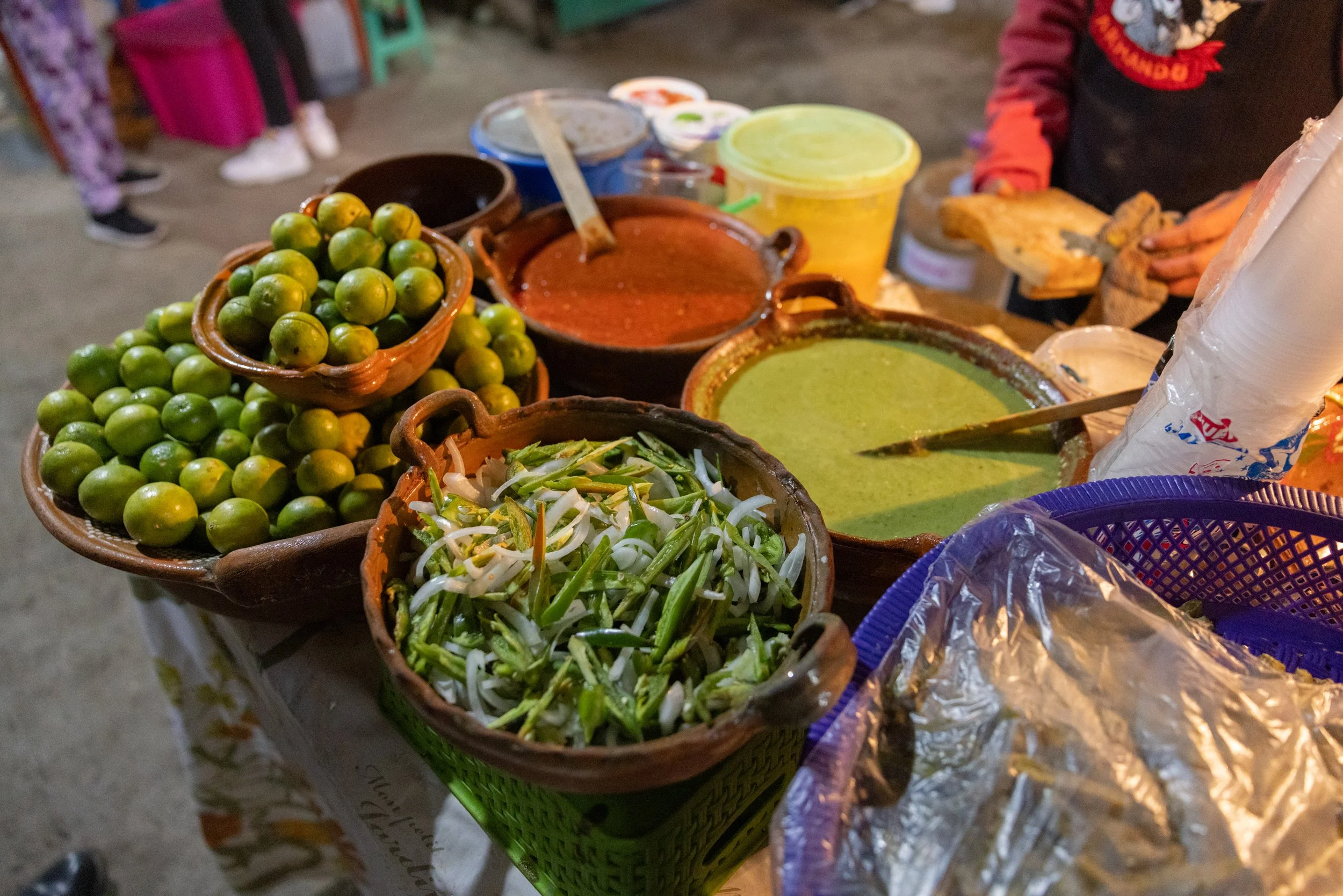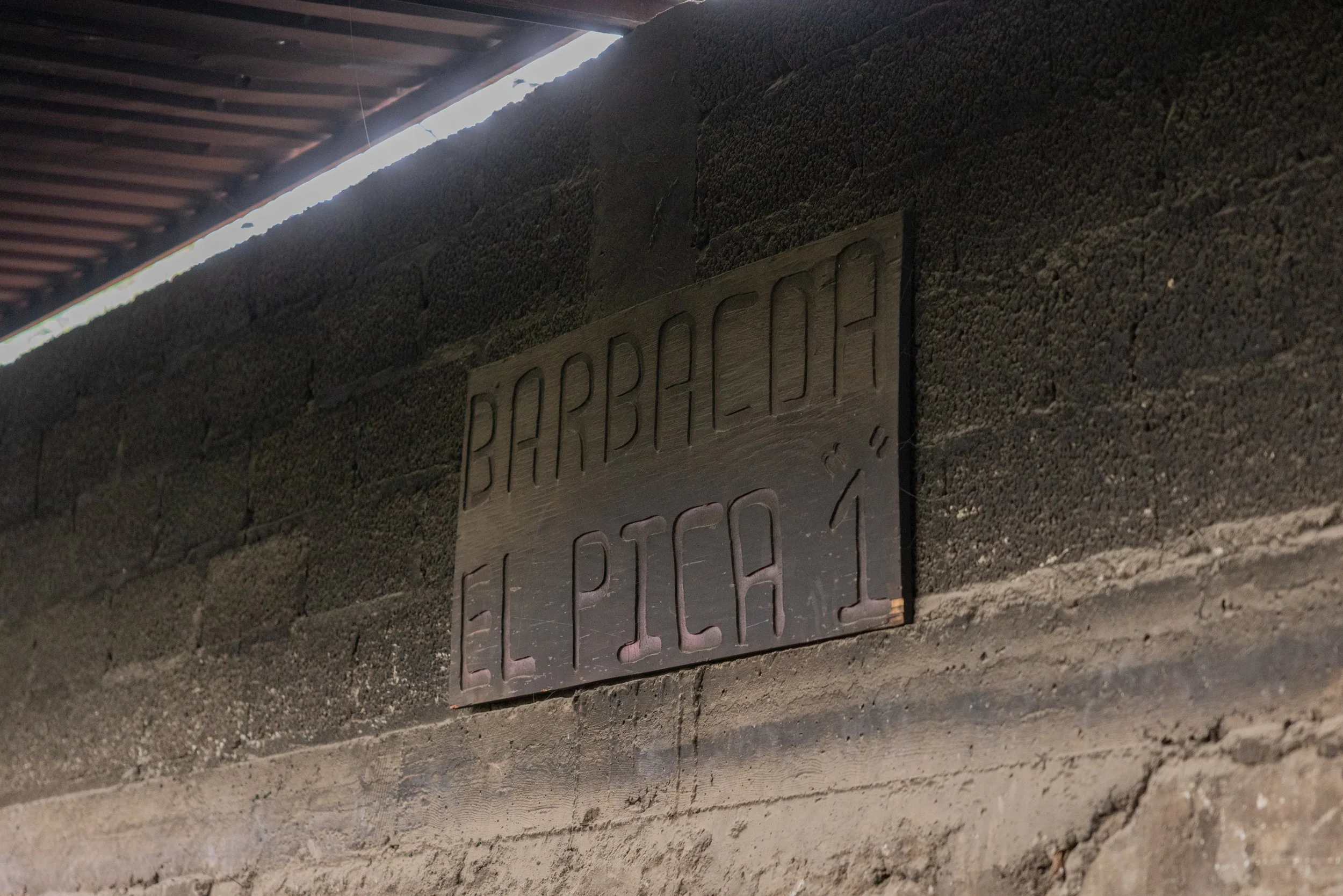Sunday Best: A Mexican Barbacoa
The first time I visited Mexico City, my friend and trusted guide, Paco insisted I accompany him and his wife, Lulu to the famous barbacoa in nearby town, Texcoco, Estado de México. Paco is an expert in Mexican food and culture and is a guide for Culinary Backstreets of Mexico. Barbacoa is an ancient method of slowly cooking meat outdoors, often underground. It likely originated in the Caribbean, where the West Indies Taino people slow-roasted food over a fire, calling it “barabicu”, which later became the word “barbecue” in other parts of the world. In Mexico, barbacoa is a common method of slow roasting meat, usually whole lamb, mutton, or goat, in a fire pit covered with leaves of the maguey plant (also known as the agave). A tray is first placed into the fire pit, and then it is filled with liquid, often with water, garlic, chickpeas, and fresh herbs. A grill is placed over the tray and topped with the meat. Layers of agave leaves cover the meat, and the pit is then filled with a lid or dirt. The meat slowly steams and braises for hours (often overnight), until it is juicy and tender.
In Mexico, many families fire up the barbacoa on Saturday night so the meat can cook all night and be enjoyed on Sunday morning after mass. In Texcoco, you must arrive by 8 am if you want to witness the removal of the dirt and leaves to reveal the steaming and aromatic meat. If you’re staying in Mexico City, as we were, you must drive 1 ½ hours to experience this excitement, and I was ready for it. Paco’s friend, Saúl Torres and his wife, Veronica own El Pica 1, one of the largest barbacoas in the area. Under canopies of trees there were colorful tables and chairs neatly arranged, which would soon be filled with families celebrating their favorite day of the week. In a large open-air stone building with a tin roof, people stood behind dozens of tables covered in colorful tablecloths, making salsas and tortillas. Huge iron pots were filled with oil bubbling with fried chicharrónes, plantains, and corn cakes. There was a table lined with clay vessels filled with pulque, a beverage made from fermented agave sap. Some were mixed with coconut water, while others were flavored with pineapple and cactus. We sampled them all.
We arrived just in time to watch a young man sweeping the dirt from one of seven pits, to reveal a piece of plywood covering the agave leaves and lamb underneath. A small crowd of people was gathering, many holding plates so they could get a scoop of steaming meat. Once the leaves were removed from the pit, the man bent down to pull out pieces of juicy lamb, laying it on a tray next to him. Once all the meat was removed, he took a plastic cup and ladled out the juice (called consommé) in the tray, pouring it into bowls to be served as a soup. A line of people had formed by then and it took just minutes for all the meat and consommé to disappear as people walked away with a plate full of meat, ready to be stuffed into tortillas adorned with salsa, onions, and cilantro. One by one, each pit was emptied, and by 9:00 most of the tables outside were filled with people. Many families brought coolers filled with drinks, and they sat under the tree canopies for a day of enjoyment and family time. Since Paco was friends with Saúl and Veronica, he had arranged for us to eat at a private table that could be reserved in advance. We passed bowls of salsa, onions, tortillas, and chicharrónes until we were stuffed and satisfied.
Two years after that first visit to El Pica 1, I returned with Paco, Lulu, and my photographer, Valerie Wei Haas. It was her first barbacoa experience and I enjoyed watching her capture the scene through her camera lens. She was just as impressed as I was when Paco had inaugurated me to the impressive event.
Now, when I see barbacoa on restaurant menus in the U.S., I question if it could ever be as good as what I experienced in Mexico. I’ve attempted my own version in a ceramic charcoal grill, wrapping a leg of lamb in banana leaves, and smoking for a few hours. It turned out to be quite tasty, but without the agave and festive environment of El Pica 1, I can never duplicate those flavors. If you’re ever in Mexico City on a weekend and crave a non-tourist experience that will satisfy all your senses drive to El Pica 1 on an early Sunday morning. You won’t regret it!












